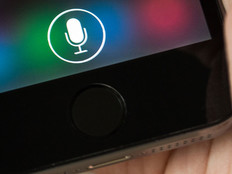The Future of GPS Technology Is Indoors
The first wave of GPS devices helped users map the outside world — think streets, highways and boulevards. But the new, hot thing in GPS technology is helping users navigate inside buildings. Call it GPS 2.0. — think hallways, corridors and conference rooms.
While we’ve by no means conquered the ongoing outdoor-mapping project, there’s a serious shift in focus by technology companies to begin helping users navigate department stores, conference centers and campuses. Signs of this shift can be seen in two recent acquisitions by two tech giants.
Earlier this year, Apple purchased WiFiSLAM, which bills itself as an “indoor GPS” company. Then, in May, Aruba Networks acquired Meridian, an “indoor GPS” platform.
In announcing the acquisition, Keerti Melkote, founder and chief technology officer at Aruba Networks, explained the opportunity that indoor GPS technology presents to technology companies, since current GPS technology is unreliable for indoor use.
“We intend to address that gap by creating ‘indoor GPS’ using Aruba’s Wi-Fi infrastructure and Meridian’s wayfinding platform. The addition of Meridian will enable enterprises to tap into a wealth of network-driven information so that they can better engage their customers with more personalized services,” he says. “This is a clear opportunity for Wi-Fi to become not only an enabling platform for BYOD, but now across industries, a revenue-producing, customer engagement platform for the business,” Melkote said.
Google, a company that in many respects is considered the king of mapping, is also dabbling in indoor-focused GPS technology. The company has struck deals with various retail centers and airports to do indoor maps, and so far, the company has created 10,000 maps. That means users can use Google Maps to navigate inside Caesars Palace in Las Vegas. Google also recently started working with stadiums, having them photographed so visitors can take virtual tours inside the venues.
Why Tracking Indoor Activity Matters
From a user perspective, there’s an obvious value to having device-driven navigation inside a building. But for businesses and organizations, there are also benefits to offering such technology. Namely, location-based marketing and advertising.
ByteLight, a Boston-based startup focused on location-based retail, is helping businesses seize on this opportunity to drive timely, targeted impulse buys.
The Boston Globe highlights the company’s value proposition in a recent article:
Imagine this: You step into a vast department store to buy a new blender, and your smartphone leads you straight to the right aisle, and then lights up with a coupon for the KitchenAid model to your left. The one remaining on the shelf has already been opened, so using your phone again, you summon a store clerk who finds a fresh box out back. Then you quickly pay with a wave of your phone over a small, glowing box that serves as a checkout register, which automatically adds points to your rewards account. Welcome to the future of brick-and-mortar shopping, made possible by a GPS-like technology that works inside buildings and is made by Boston tech start-up ByteLight. Indoor GPS technologies such as the aforementioned will help move the integration of mobile devices and retail beyond merely downloading an app, thereby turning the smartphone into a virtual guide and salesperson.
With the significant investments Apple, Aruba and others are making in the space, it’s safe to say that the path to retail’s future is an inside job.








